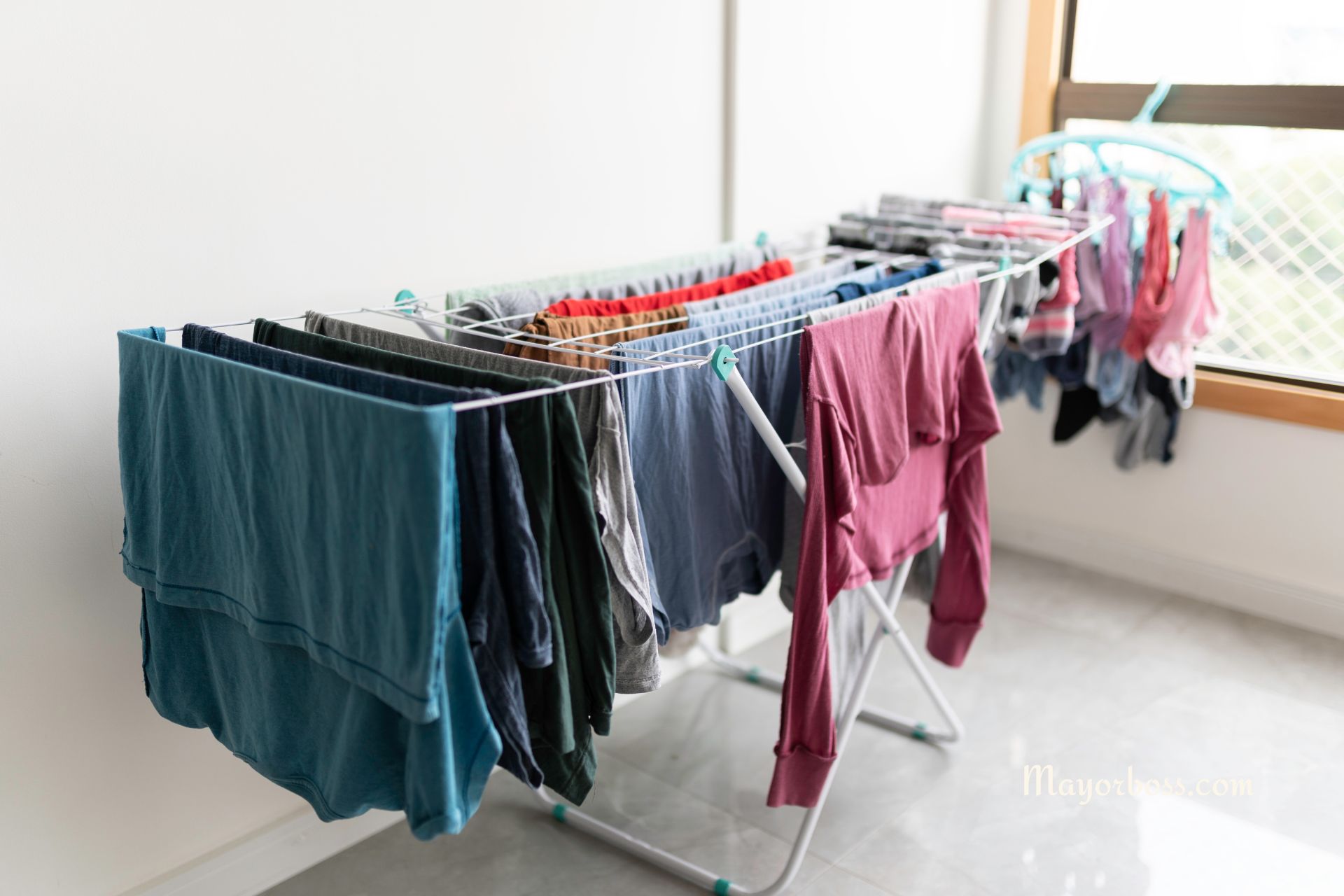This Happens When You Dry Your Laundry in Your Apartment
Have you ever pulled your freshly washed clothes from the machine and decided to dry them indoors? Maybe it’s raining outside, or perhaps you don’t have a dryer. Drying laundry inside your apartment seems like a simple, harmless activity. However, the truth may surprise you. Drying clothes indoors can lead to a host of issues that may affect your health and the environment of your home.

Increased Humidity and Mold Growth
First off, let’s talk about humidity. Drying clothes inside significantly raises the humidity levels in your home. This extra moisture must go somewhere. Often, it soaks into the air around you. High humidity generally creates a flawless breeding ground for mold and mildew. You might notice black or green spots appearing on walls, especially around corners and near ceilings. Mold is not only unsightly; it can also trigger allergies, respiratory problems, and other health issues. Are you noticing a musty smell or seeing more condensation on your windows? These could be signs that your indoor air quality has declined due to drying clothes indoors.
Lingering Odors
Have you noticed a lingering damp smell on your clothes even after they’ve dried? When clothes dry slowly indoors, they are more likely to absorb odors from your home, including cooking smells or pet odors. This can leave your garments smelling less than fresh, even if they’re clean. It’s a subtle issue that can be quite frustrating.
Potential Health Risks
With increased humidity and the presence of mold comes the potential for health risks. Are you aware that mold and damp environments can exacerbate asthma and allergy symptoms? This is especially concerning in tightly sealed spaces where air exchange is limited. For those with respiratory issues or sensitive allergies, indoor drying could pose a significant health concern, making it harder to breathe or causing frequent allergic reactions.
Structural Damage to Your Home
Over time, excessive moisture can damage the structural integrity of your apartment. Persistent dampness can rot wood, peel paint, and even weaken the fabric of your building. This kind of damage is not only difficult to repair but can also be quite expensive.
Energy and Cost Efficiency
Now, let’s consider the efficiency of drying clothes indoors. It might seem like you’re saving energy by not using a dryer, but the reality could be different. High humidity means your heating system must work harder to maintain a comfortable temperature. During colder months, this could lead to increased heating costs. In essence, what you save on the dryer might end up increasing your heating bills.
Prolonged Drying Times
Drying indoors doesn’t just potentially smell; it also takes longer. Clothes hung inside do not receive the same airflow as those dried outside or in a dryer. This slow process can be inconvenient, particularly if you need a garment ready for the next day. Slow drying can also be harsh on fabrics, leading to wear and tear over time.
How Can You Safely Dry Clothes Indoors?
Improve Ventilation
So, what can you do about it? Improving ventilation is key. Whenever you dry clothes inside, make sure to open windows or use an exhaust fan. This practice helps moisture escape and keeps the air in your apartment fresher.
Use a Dehumidifier
Consider using a dehumidifier. This device can drastically reduce the moisture levels in your home, making it less hospitable to mold and mildew.
Dry Clothes Sparingly Inside
Try to dry clothes outdoors whenever possible. If you must dry indoors, do so sparingly and ensure the room is well-ventilated. Limit the amount of laundry you dry at once to decrease the overall moisture released into your apartment.
Frequently Asked Questions
Q: Is it okay to dry clothes indoors in winter? A: Yes, but with caution. Ensure the room is ventilated, and consider using a dehumidifier to control moisture levels.
Q: What can I do to reduce the humidity when drying clothes inside? A: To mitigate humidity, ensure your space is well-ventilated. Open windows or use a dehumidifier to help control moisture levels. This helps prevent mold growth and reduces health risks.
Q: What are the signs that drying clothes indoors is affecting my home? A: Watch for increased condensation on windows, a musty smell, or the appearance of mold and mildew on walls and ceilings.
Q: Can indoor drying damaged clothing? A: Yes, if clothes remain damp for too long, they can develop mold and mildew, which can ruin fabrics and leave unpleasant odors.
Q: Are there alternatives to drying clothes indoors without using a dryer? A: Yes, you could consider investing in a high-spin washing machine to remove more water from your clothes, reducing drying time. Another option is to use a heated airer, which uses less energy than a traditional dryer and can speed up the drying process indoors.
